
I must admit I do have a little leg up on the average person when it comes to counter tops, as I briefly ran a stone fabrication business about a decade ago. Knowing nothing about stone fabrication at the time, I took it over and tried to stabilize it until we eventually sold the business. I never became an expert or anything, but it did give me some understanding of the business and of the different types of materials, and some ideas on how to save money.
If you’ve ever had to choose counter top material before, you know there are literally thousands of types of stone out there, and not only different types (granite, marble, limestone, engineered stone) but within each family there are almost infinite choices. And there are also lots of choices about fabrication styles and finishes (polished, honed, and leathered to name a few). For example, here is the stone yard we visited last week.
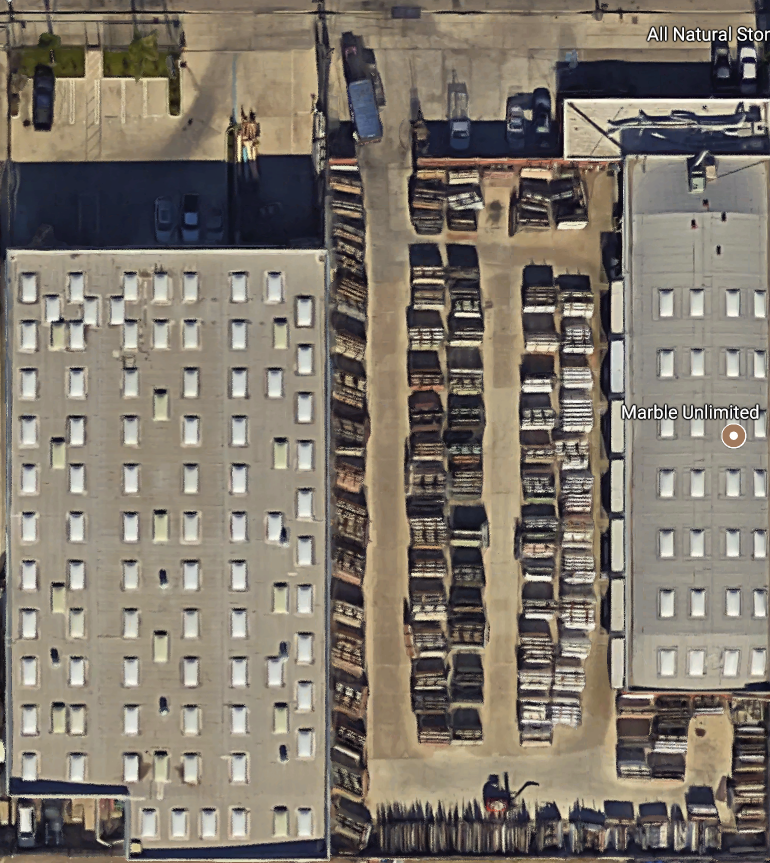
Those two buildings are full of stone too!
And stone can be expensive. Materials can typically run from the low $20’s per square foot to well over $100 / sqft for really exotic materials. Often times, the average square foot cost is much higher because you are buying an entire slab and anything you don’t use, you still pay for.
For example, this is probably a $100/sqft slab.
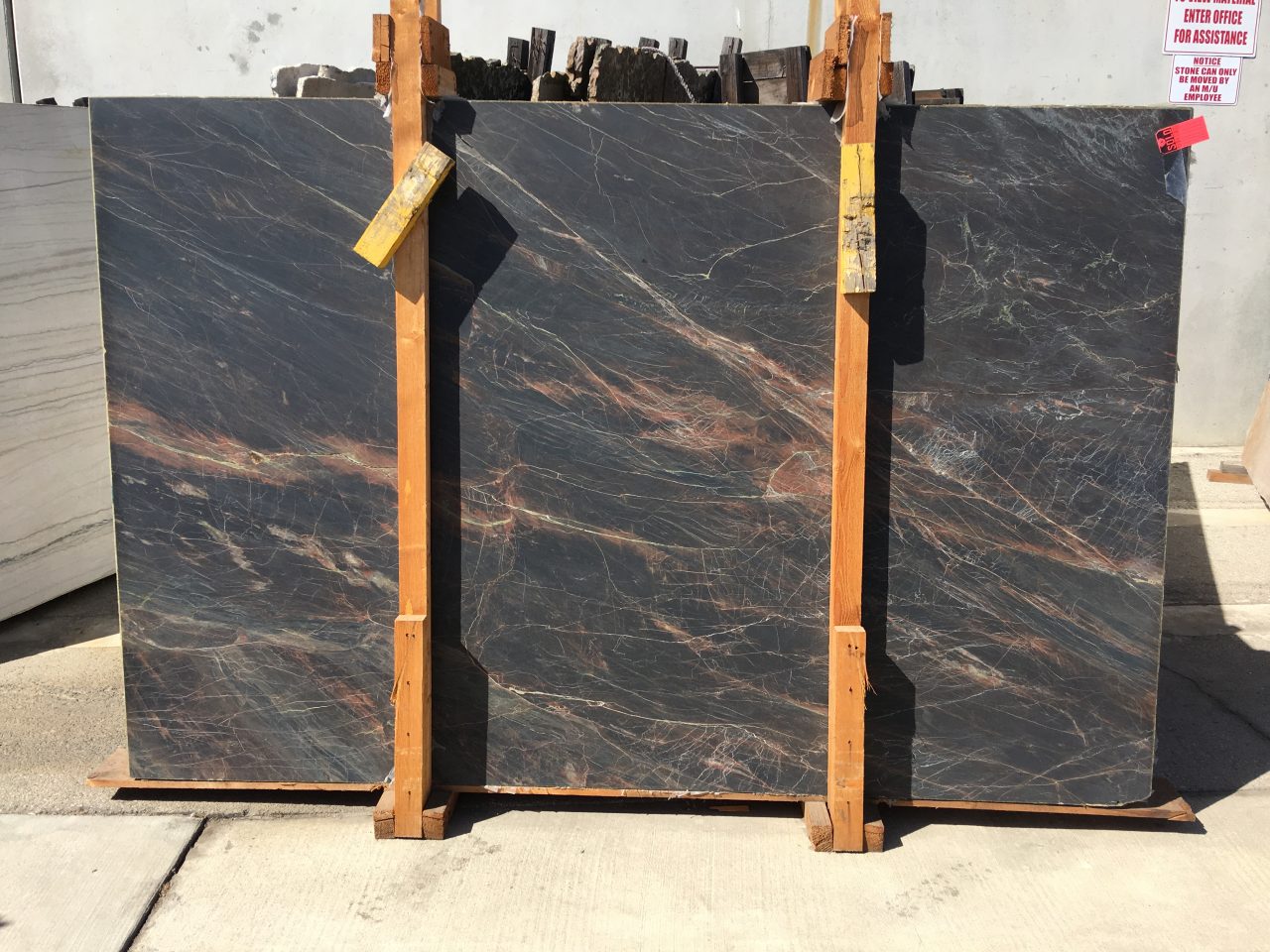
And these are a pair of $35/ft slabs
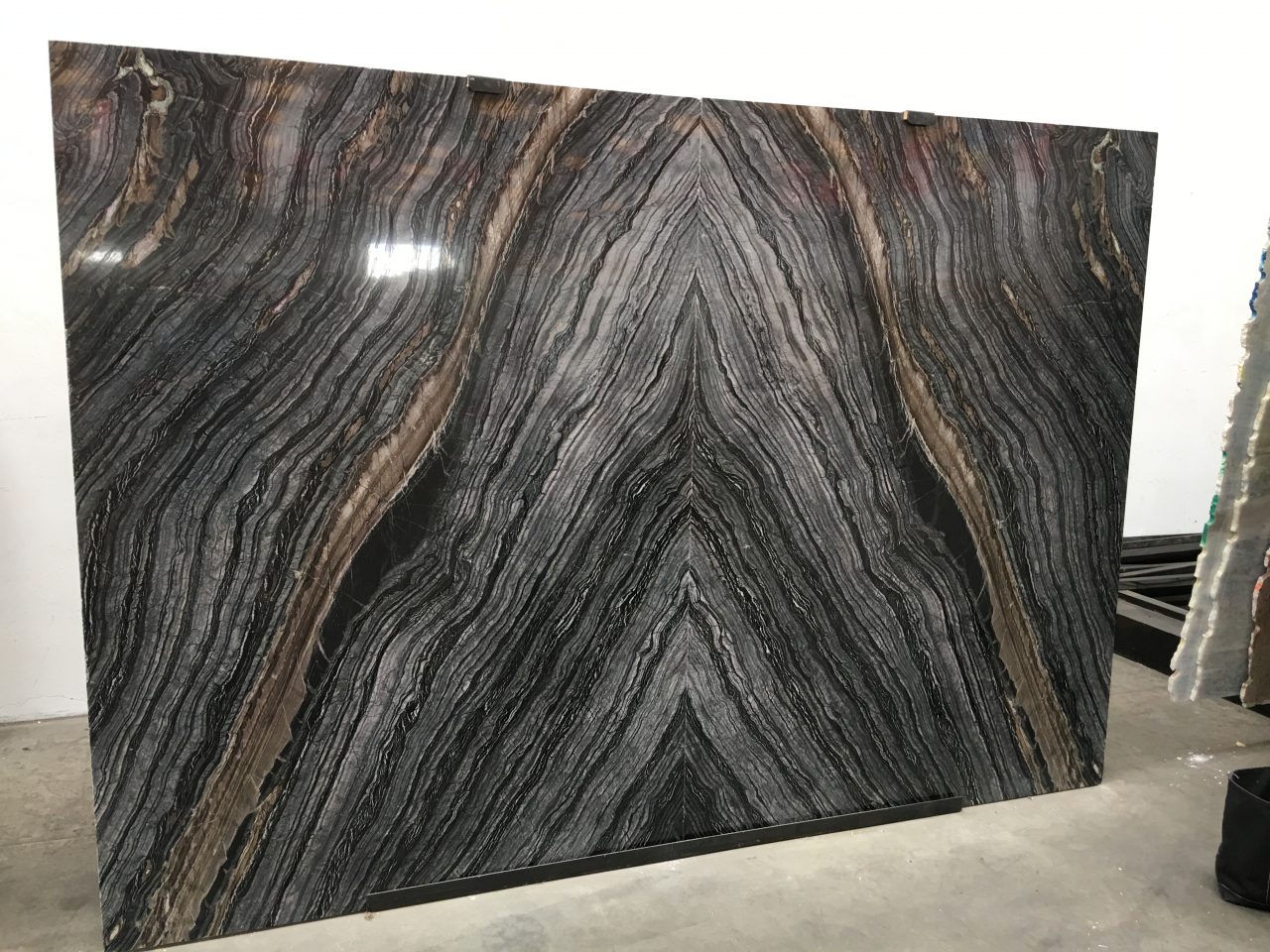
As an interesting side note, the above slabs are called “book matched”. This means that they are cut in a way that the two sides that faced each other are polished, so that you can put them side by side and the grains match. This is one way to get a really interesting pattern.
There are a few good ways to save some money on stone.
Reduce wastage
Using the same material in different locations can allow you to use more of a slab and therefore have less wastage. For example, we plan on using the cut-out for our stove in our kitchen island to do a bathroom top.
Orphan slabs
Often time stone yards will have single slabs of materials they are willing to part with at a discount. One stone yard pointed to an entire row along the back wall and said “everything there is 50% off. Single (or orphan) slabs aren’t as useful because often times more than one slab is needed to do something like a kitchen. Slabs come in lots, which means, they were cut from the same block of stone. A different lot might come from a different place in the quarry. Even if it is the same material, the differences in color or pattern can be noticeable enough that if the two materials were put side by side, you would notice the difference.
Sometimes you can get around this by, say, using one slab for the island and other slabs for the counter tops. If materials are near but not right next to each other, small differences may not be perceptible.
For example, consider this orphan slab which has been sitting in the stone yard for 10 years, and which we can probably get for $10 per square foot.
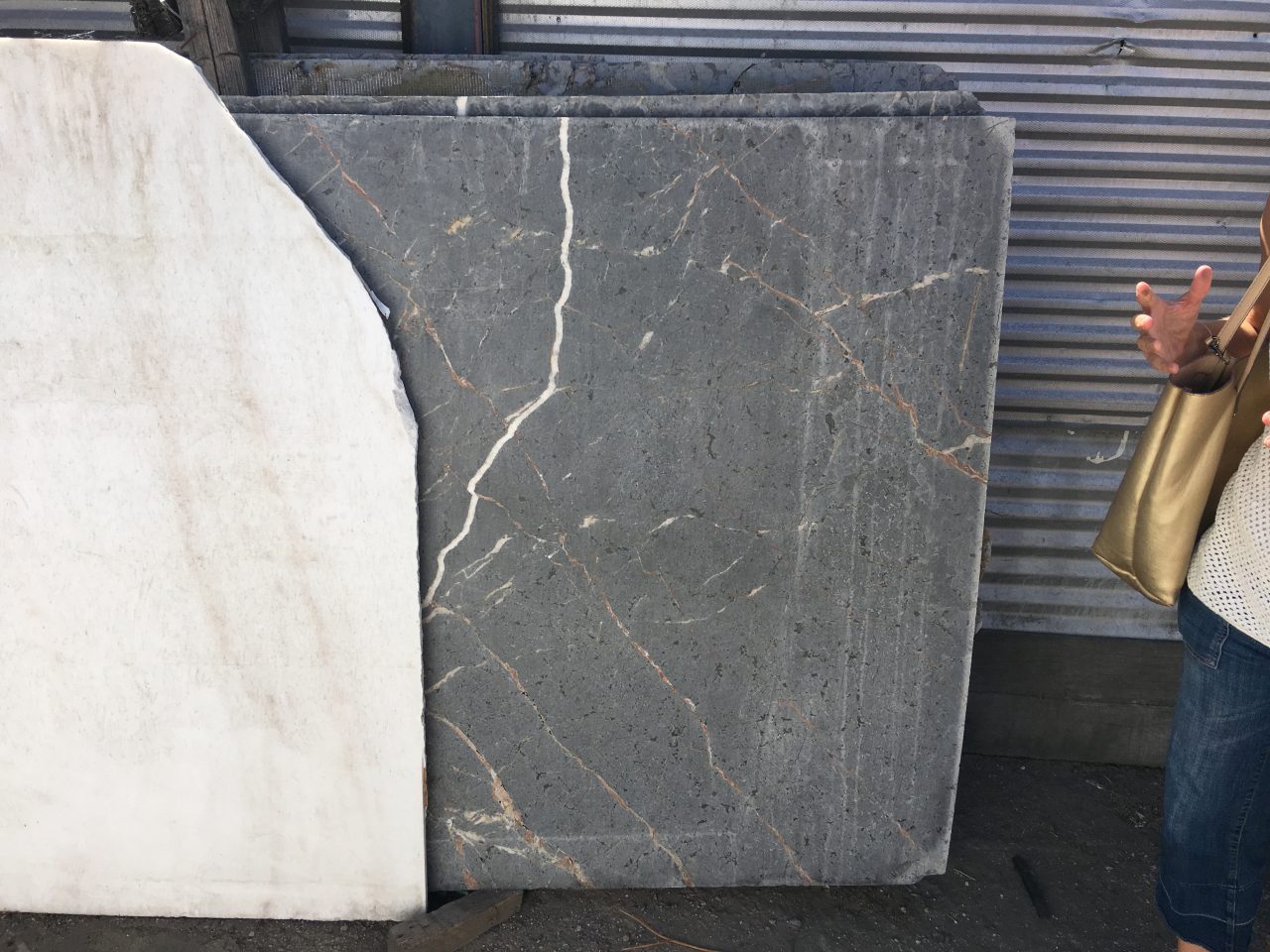
It is somewhat similar to the $100/ft slab above but at 1/10th the cost.
So, orphan slabs can often be had for cheaper than slabs that are part of a larger lot of the same material.
Smaller slabs
Look for smaller slabs that are right-sized for smaller surfaces. For example, the book matched slabs above are about 2/3 the size of a full-sized slab and don’t have to be purchased together. Here are some others we found that are smaller and cost effective.
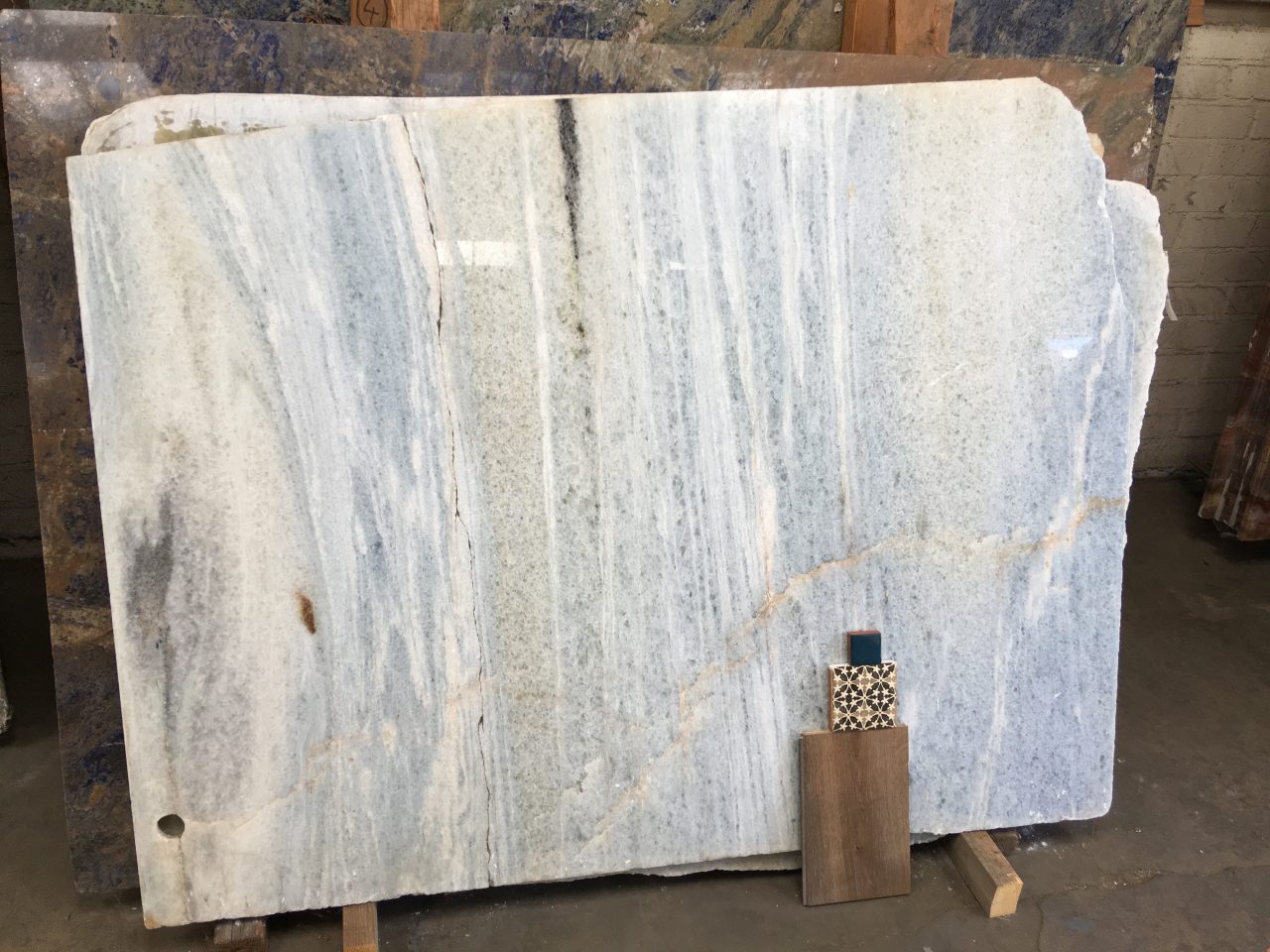
(You can see some of our other material choices there our designer brought along to check color match.)
We might be able to make two small bathroom vanities out of that one.
Remnants
Ah, now here is where it gets really interesting. A fabricator takes the stone and fabricates it into tops. Almost always there is left-over material, and often, it is enough that it can be used for something else of small to moderate size. Sometimes it can even be a large slab with just a small piece cut out of it, which often happens from a large job that takes many slabs, like a large kitchen (like ours). Here is an example of such a piece.
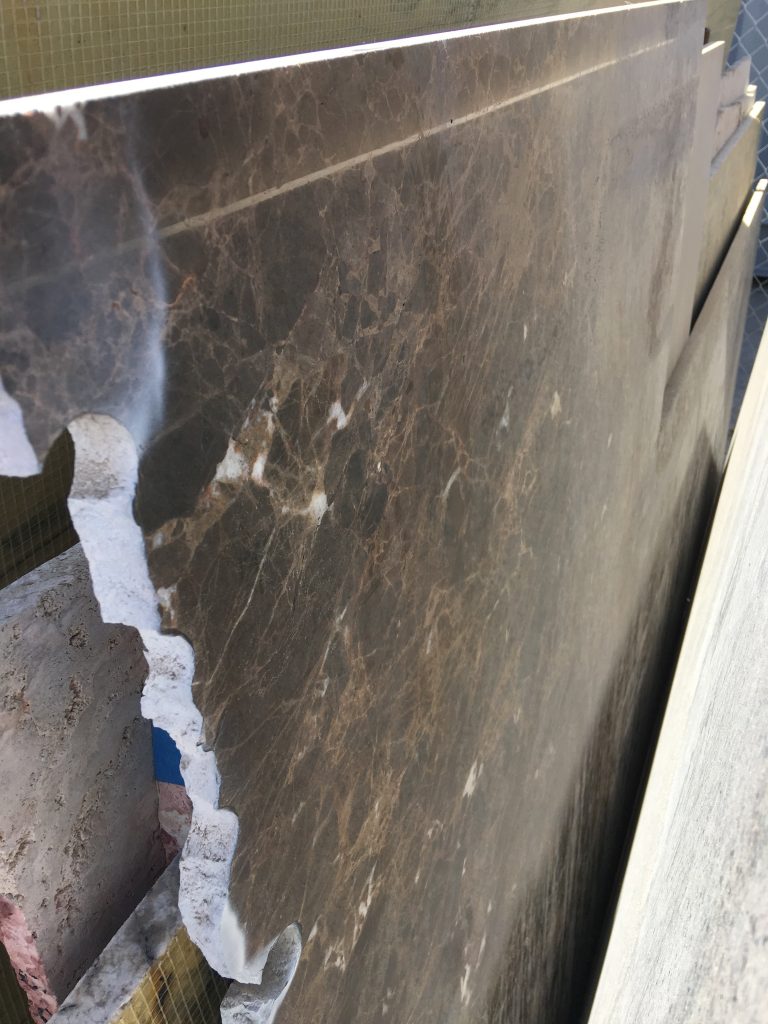
But most homeowners don’t want to keep a slab lying around their yard in the off-chance they may want to use the same material at some future date. So, the fabricators usually just stack the extra slabs on racks in their yard. Most fabricators have a large stock of remnant pieces, that, for the most part, no-body wants.
Our fabricator has a pretty small stock of remnants, perhaps 40-50 pieces, but we were still able to find 5 or 6 interesting pieces out of the lot.
Smaller pieces work well for us because we have quite a few smaller surfaces, like bathroom vanities, counter tops in our craft room, and a small kitchenette in our in-law quarters.
The remnant cost is far cheaper than even the cheapest new stone.
Use thinner material
Typical thickness for a stone slab is either 2cm or 3cm. I really like the look of a nice thick 3cm or so slab counter top. But, if you think about how stone slabs are cut out of a chunk of quarried rock, you might well guess that a slab that is 1.5 times as thick as another might cost 1.5 times as much, and you would be correct.
One way around this is to use thinner material and then create the illusion of a thicker slab by adding material to the edge. Here is what it looks like when it is done the cheap way, but simply gluing another strip underneath at the edge.
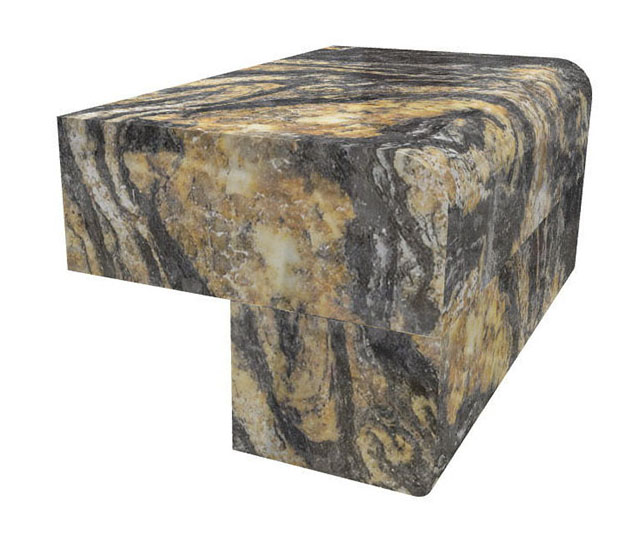
As you can see, the line is pretty visible. A better way is to use a mitered corner.
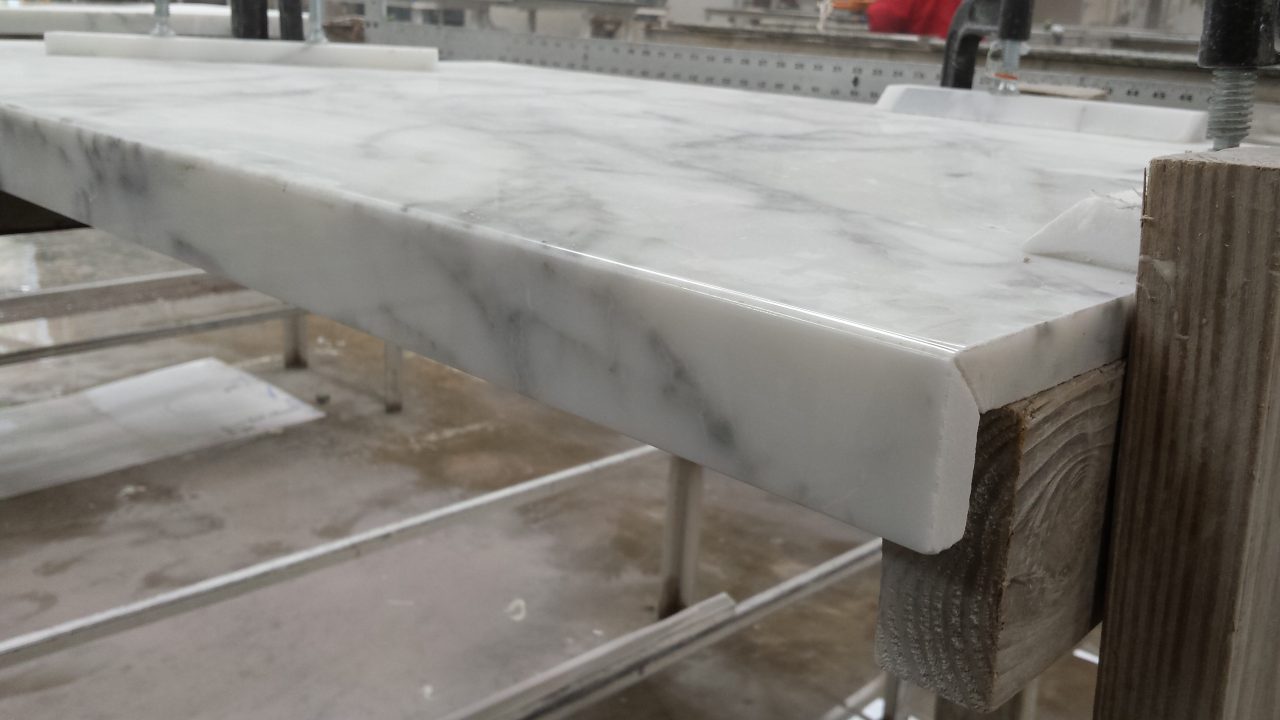
As you can see from this picture, the line is right in the corner of the stone, which often catches the glare of the lighting anyways, making the line very very hard to see. You an further create the illusion of a thicker slab by adding a back block, like this.
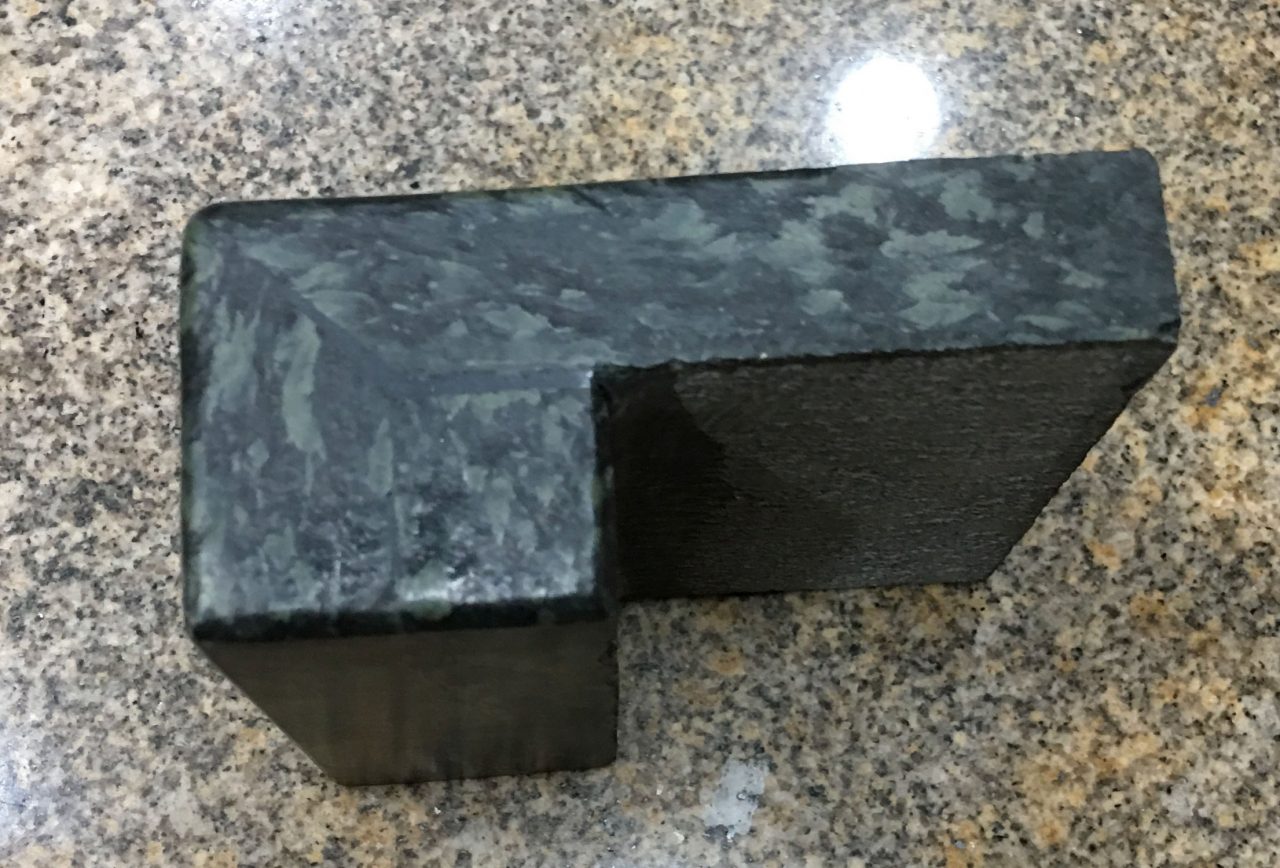
Now, even from underneath, or if someone happens to grab the edge of the counter and their fingers feel underneath, it look and feels like a thicker slab.